 Lesser Black-backed Gull- Kleine Mantelmeeuw (graellsii & intermedius)
Lesser Black-backed Gull- Kleine Mantelmeeuw (graellsii & intermedius)
(last update: May 17 2015)
lbbg 1cy May
lbbg 1cy June
lbbg 1cy July
lbbg 1cy August
lbbg 1cy September
lbbg 1cy October
lbbg 1cy November
lbbg 1cy December
lbbg 2cy January
lbbg 2cy February
lbbg 2cy Mar-April
lbbg 2cy May
lbbg 2cy June
lbbg 2cy July
lbbg 2cy August
lbbg 2cy September
lbbg 2cy October
lbbg 2cy Nov - Dec
lbbg 3cy Jan-April
lbbg 3cy May
lbbg 3cy June
lbbg 3cy July
lbbg 3cy August
lbbg 3cy September
lbbg 3cy October
lbbg 3cy Nov - Dec
lbbg sub-ad Jan-April
lbbg sub-ad May
lbbg sub-ad June
lbbg sub-ad July
lbbg sub-ad Aug
lbbg sub-ad Sept
lbbg sub-ad Oct
lbbg sub-ad Nov
lbbg sub-ad Dec
lbbg adult January
lbbg adult February
lbbg adult March
lbbg adult April
lbbg adult May
lbbg adult June
lbbg adult July
lbbg adult August
lbbg adult September
lbbg adult October
lbbg adult Nov - Dec
second calendar year (2CY): MAY
a short note on 2CY Lesser Black-backed Gulls in May in the Netherlands.
The variation in moult strategies within the LBBG-complex is nearly larger than the inter-specific variation in moult strategies between most other European large gull-taxa.
To a certain extent this has been caused by intra-specific differences in the geographical position of the winter-quarters. Concerning first summer LBBG, several authors highlighted the different moult strategies between fuscus / heuglini and their western relatives graellsii / intermedius in recent publications.
However, the articles were written on the assumption that intermedius and graellsii share a similar moult strategy. Without questioning the importance of these publications, we think the latter is a (too) simplified approach.
On the basis of concise descriptions and photographs of a few representative individuals, we would like to give an impression of our observations made over the last few years.
Currently, we recognize at least three types of 1st-summer LBBG, which occur in large numbers (up to 60 individuals daily) on migration during spring and early summer at the Maasvlakte, the Netherlands (51.58 N, 4.02 E). Birds with intermediate characteristics are certainly not rare, but at least a considerable part is distinguishable.
Anyhow, we would like to stress that our classification has mainly been based on the differences in plumage patterning or moult timing.
Plumage patterning:
When juvenile gulls leave the colonies, they normally do that in juvenile plumage. The next months, in their 1st winter, they replace several to many of the feather tracts in a so-called 'post-juvenile moult'. The post-juvenile moult in LBBG include, at least, the scapulars. These feathers then become 2nd generation. Just prior to northbound migration, the small upper scapulars may be replaced again, then become 3rd generation.
The patterns range from bold brown anchor pattern on a pale base in classic graellsii to plain dark brown feathers with a blackish triangular centre in classic fuscus. It should be said that the patterns on feathers can also be anything in between, but it's good to keep in mind these obvious classes at the end of the spectrum.
Moult timing:
Moult timing and the extent of the post-juvenile moult are set by:
A) genetic
imprint and
B) by location (latitude) of the wintering grounds.
Again, in analoge with plumage patterning, we determine two classes at the end of the spectrum. First, a moult timing which starts very soon after birds leave the colony, i.e. a post-juvenile moult in autumn which continues to the first half of the winter, but which is then halted in December. The extent of this moult is limited and most birds only include the scapulars (thus no wing-coverts, nor tertials, nor flight-feathers).
At the other end of the spectrum we see birds that remain in juvenile plumage for the autumn and early winter, but they start a rapid and extensive moult in the second half of the winter. This moult is extensive as it not only include scapulars, but also wing-coverts, tertials, tail and even secondaries. Classic fuscus also include primaries in the winter moult. As said, they start late in winter, and as a consequence, when we see them back in NW Europe in May, normally the replaced feathers are in a splendid condition, only moulted a short time ago.
first type
From the few ring-recoveries from England and the Netherlands, we could say that Dutch 1st summer LBBG hatched at the Maasvlakte don't differ much from same-aged English graellsii.
Normally, the scapulars and mantle feathers have a pale or greyish base with brown anchors or barring. The wing-coverts are usually completely juvenile or juvenile with only a small number of 2nd generation coverts. The tail is largely black-brown and nearly always juvenile (or at most 2nd generation R1). The under-parts and head are patterned with bold markings on a dirty off-white base. The bill is mostly blackish, with only a slightly paler base. Legs are pink.
The first birds with active primary-moult in the inner primaries appear in the last week of April (generally in NW France) and in the first week of May at Maasvlakte, the Netherlands. Towards the end of the month, the number of birds in active primary moult steadily grows. From the beginning of June it is hard to find any individual which has not shed any primary yet.
The quality of remaining juvenile primaries in spring is usually low, caused by heavy bleaching and wear. The contrast between new and old primaries is very obvious.
First type birds include many 2CY May graellsii from the U.K. and continental NW Europe, including the Netherlands. Many of these birds return in NW Europe with limited post-juvenile moult (normally only scapulars) and bold barring or anchor patterning.
Nevertheless, from these colonies we sometimes observe more advanced birds in spring, like in spring 2000. A Belgian colour-ringed individual showed a suspended covert-moult process with 4 2nd generation greater coverts, complete 2nd generation tertials, 8 2nd generation median coverts and approximately the same number of 2nd generation lesser coverts.
In spring 2017 we photographed 2CY LBBG G[Y.CFB] from the Netherlands, also with advanced moult in coverts and tertials and which had replaced R1 as well. Apparently, from these colonies we may sometimes record slightly advanced birds. It remains to be seen if this correlates with far southern winter quarters.
first type - example birds |
|
 |
|
 |
 |
 |
Regarding both second and third type
We believe 'core-representatives' of the 2nd and 3rd type are morphologically different from 'core-first types' and probably belong to intermedius-populations. They show a short neck, small rounded head, fine and short bill, short legs (especially tibia) creating a delicate and compact appearance. In some individuals this is pronounced by the relatively short primary-projection. Also, plumage pattern and the timing of moult in wing-coverts and tail-feathers are on average different from the first type.
At first we would like to treat wing-covert, tail and primary moult in general.
Tail-feather moult
The number of moulted tail-feathers in the winter-quarters is highly variable and subsequently we find large variation in May and June. Advanced individuals show a complete 2nd generation tail, while others return with a clearly suspended moult-stage. In the winter-quarters, many individuals do not proceed the moult of the rectrices in a descendant sequence, since migrating birds in spring really show every conceivable moult-stage (e.g. R5-R6 2nd generation, while R1-R4 are still juvenile, etc).
Some birds do not show fully-grown rectrices, but it is at least not usual to find a tail in active moult by May and the first half of June. Apart from the obvious fresh white tips, the pattern of the 2nd generation rectrices is mostly juvenile-like, but the darker parts are pure black and the pattern is more vermiculated. However, birds with for example a partially white R2, a nearly complete black R3 and with a R4 showing much white, are common. A small minority shows only very little black on the 2nd generation tail-feathers.
The renewed upper-tail coverts are completely white or with some sparse barring on a white base.
Wing-covert moult
The wing-covert moult has mainly been suspended prior to migration, with in most cases a generation contrast between the inner and outer coverts. This especially applies to the greater coverts, which often show a mix of juvenile and 2nd generation coverts, together with tertials and median coverts which have been renewed. The moult-stage of lesser coverts is more advanced than in the greater coverts, but especially 'upper' lesser coverts are less advanced than the tertials and median coverts.
Regarding the under-wing coverts and axillaries; it is often very difficult to obtain good views to determine the generation. In advanced individuals, these under-wing coverts are already partially or completely renewed and sometimes nearly all-white. It might turn out that the moult of under-wing coverts and coverts show similarity in moult strategy.
Primary moult
The onset of the primary moult in 2nd and 2rd type 2CY LBBG in early summer is on average slightly later (1-2 weeks) than in typical 1st types. Additionally, the individual variation is more pronounced, with e.g. in the 3rd week of June, birds with only P1-P2 missing and birds which already shed P7. However, in comparison with the first type, differences in timing of primary moult is usually not significant.
An interesting phenomenon we encountered, was the sometimes remarkably good condition of the remaining juvenile primaries. In a few cases we experienced real difficulties in determining the generation of the primaries.
second type
In short we will discuss the general variation of the 2nd type and its difference from the 1st and 3rd type.
Compared with the first type we already stated that both second and third type usually return to the breeding grounds (northern feeding grounds) with some renewed wing-coverts, tertials and even regularly rectrices. Besides other differences from the first type already covered under the header 'regarding both types', juvenile tail-feathers in this type show less blackish brown patterning on the base of the tail-feathers, causing a less broad but more contrasting tail-band.
Even the under-parts are paler in the second type, with contrasting spots mainly restricted to the flanks and lower hind-neck. The palest parts are the breast and head.
In comparison with the 3rd type the under-parts are slightly more patterned, especially on the flanks and hind-neck. The 2nd generation upper-parts and wing-coverts show obvious barring and anchor-patterns on a pale or cold brownish grey centre, surrounded by a pale fringe in the second type. The tertials show contrastingly bold brown or blackish barring on a white base or only a blackish brown base with a sub-terminal bar sharply demarcated from the pale tip (like third type birds).
Moult-stage and even pattern of renewed feather tracts are on average less advanced than in the third type. The upper-parts seem to be moulted in an earlier stage than the wing-coverts, resulting in a 'wear contrast' between fresher coverts / tertials against heavier worn scapulars and mantle feathers.
second type - example birds |
|
 |
 |
 |
|
 |
 |
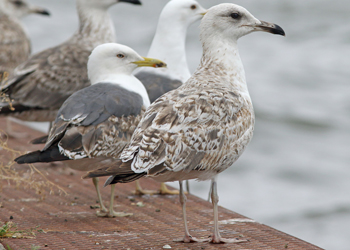 |
third type
General information regarding the third type and its difference from typical fuscus:
Our knowledge of fuscus is confined to published photographs and limited field observations, but there is little doubt that 3rd types may resemble fuscus superficially. However, we have good reasons to believe this type belongs to intermedius rather than fuscus. To name a few:
1. We have seen every conceivable moult stage (0-100%) in coverts, tertials and tail feathers.
2. Although less often, comparable advanced moult stages occur in the 2nd type.
3. Returning birds with completely or partially moulted primaries (suspended) are very rare.
4. Migration started from the beginning of May onwards, which is too early for 2CY fuscus (arriving by July). The latter taxon only rarely reaches northern latitudes in May.
Even if there appears to be intermediate characters, it remains unlikely that birds of this type are a result of hybridisation between both taxa. One would at least expect less high numbers on migration.
As stated earlier, we only have limited experience with fuscus. Based on photographs in various magazines, we think that on colour and pattern of plumage alone, some individuals are hard to separate from typical fuscus. We feel that mahogany brown colours in coverts and tertials are rare in typical 3rd types. In individuals with freshly moulted coverts, the pattern we most often see is a blackish central wedge on a grey brown base, broadening towards the tip, with near the tip some white. Another common pattern is just a diffuse dark shaft on a grey-brown base, and normally with some white near the tip. But remember that patterns may become indistinct or even undetectable when feathers become heavily worn and abraded.
In many birds, the mantle and wing-coverts have been replaced in one wave and in such a case lack any 'wear contrast'. This sometimes results in an already worn and bleached 2nd generation bird.
As shown in the images, typical 3rd types are quite easy to separate from typical 2nd types on plumage colouration and pattern alone. The under-parts are clean white, with only contrasting spots on hind-neck and flanks. Like the second type, this type shows a paler bill-base. A few birds already have a pale-yellow bill-base. Pale yellow legs have also been noticed in this type, but surely not often.
third type - example birds |
|
 |
|
 |
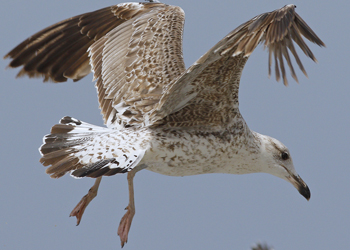 |
other types
Except for these three recognizable types, individuals with serious characteristics of fuscus or with serious characteristics of heuglini turn up in the Netherlands during spring and early summer. Although we call these types simply fuscus-types and heuglini-types respectively, this is without the intention of treating these birds as true representatives of both taxa.
It is possible that both types are aberrant individuals from the third or (less probable) second type as discussed above. Lars Jonsson, in his article about identification of fuscus LBBG (Birding World, 1998) states: "probably the most obvious option is to look for first-summer birds with a new set of flight feathers in July-August."
other types - example birds |
|
 |
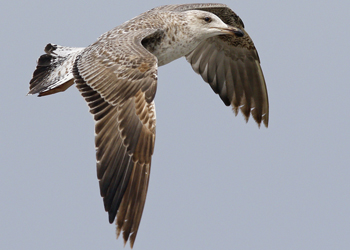 |
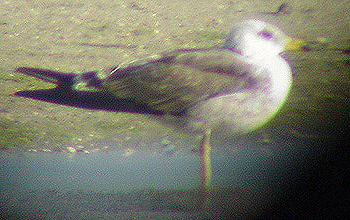 |
 |
LBBG from the UK: 2cy graellsii
.
 Lesser Black-backed Gull graellsii 030:F 2CY, May 16 - June 01 2017, Leixões harbour, Matosinhos, Portugal. Picture: José Marques.
Lesser Black-backed Gull graellsii 030:F 2CY, May 16 - June 01 2017, Leixões harbour, Matosinhos, Portugal. Picture: José Marques. Lesser Black-backed Gull graellsii 069:F 2CY, March - May 2017, Leixões Harbour, Matosinhos, Portugal. Picture: José Marques.
Lesser Black-backed Gull graellsii 069:F 2CY, March - May 2017, Leixões Harbour, Matosinhos, Portugal. Picture: José Marques. Lesser Black-backed Gull graellsii 2FJ1 2CY, May 30 - June 01 2017, Matosinhos, Portugal. Picture: José Marques.
Lesser Black-backed Gull graellsii 2FJ1 2CY, May 30 - June 01 2017, Matosinhos, Portugal. Picture: José Marques.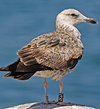 Lesser Black-backed Gull graellsii 7FJ7 1CY-2CY, September 2016 & May-June 2017, Matosinhos, Portugal. Picture: José Marques.
Lesser Black-backed Gull graellsii 7FJ7 1CY-2CY, September 2016 & May-June 2017, Matosinhos, Portugal. Picture: José Marques. Lesser Black-backed Gull graellsii AZAD 2CY, May 28 2011, Oostende, Belgium. Picture: Peter Adriaens.
Lesser Black-backed Gull graellsii AZAD 2CY, May 28 2011, Oostende, Belgium. Picture: Peter Adriaens. Lesser Black-backed Gull graellsii R.CRN 2CY, May 09 2017, Leixões harbour, Matosinhos, Portugal. Picture: José Marques.
Lesser Black-backed Gull graellsii R.CRN 2CY, May 09 2017, Leixões harbour, Matosinhos, Portugal. Picture: José Marques.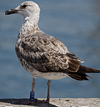 Lesser Black-backed Gull graellsii F:410 2CY, May 30 - June 09 2017, Leixões harbour, Matosinhos, Portugal. Picture: José Marques.
Lesser Black-backed Gull graellsii F:410 2CY, May 30 - June 09 2017, Leixões harbour, Matosinhos, Portugal. Picture: José Marques.LBBG from Belgium: 2cy graellsii
.
 Lesser Black-backed Gull graellsii AR0.V 2CY, May 09 2017, Matosinhos beach, Matosinhos, Portugal. Picture: José Marques.
Lesser Black-backed Gull graellsii AR0.V 2CY, May 09 2017, Matosinhos beach, Matosinhos, Portugal. Picture: José Marques. Lesser Black-backed Gull graellsii NAAC 2CY, May 22 2011, Oostende, Belgium. Picture: Peter Adriaens.
Lesser Black-backed Gull graellsii NAAC 2CY, May 22 2011, Oostende, Belgium. Picture: Peter Adriaens. Lesser Black-backed Gull graellsii NJAV 2CY, May 28 2011, Oostende, Belgium. Picture: Peter Adriaens.
Lesser Black-backed Gull graellsii NJAV 2CY, May 28 2011, Oostende, Belgium. Picture: Peter Adriaens.LBBG from the Netherlands: 2cy graellsii
.
 Lesser Black-backed Gull graellsii 1||L 2CY, May 09 2017, Leixões harbour, Matosinhos, Portugal. Picture: José Marques.
Lesser Black-backed Gull graellsii 1||L 2CY, May 09 2017, Leixões harbour, Matosinhos, Portugal. Picture: José Marques. Lesser Black-backed Gull graellsii 8||Y 2CY, May 09 2017, Leixões harbour, Matosinhos, Portugal. Picture: José Marques.
Lesser Black-backed Gull graellsii 8||Y 2CY, May 09 2017, Leixões harbour, Matosinhos, Portugal. Picture: José Marques. Lesser Black-backed Gull graellsii Y.CFB 2CY, May 29 2017, Heemskerk, the Netherlands.
Lesser Black-backed Gull graellsii Y.CFB 2CY, May 29 2017, Heemskerk, the Netherlands. Lesser Black-backed Gull graellsii K.XAW 2CY, May 28 2011, Oostende, Belgium. Picture: Peter Adriaens.
Lesser Black-backed Gull graellsii K.XAW 2CY, May 28 2011, Oostende, Belgium. Picture: Peter Adriaens.LBBG from the N Germany:
2cy transition graellsii - intermedius
.
 LBBG H513 April & May 2008, Ciudad Real, Spain. Picture: Gabriel Martín.
LBBG H513 April & May 2008, Ciudad Real, Spain. Picture: Gabriel Martín. LBBG H851 May 03 2010, Madrid, Spain. Photo by Delfín González.
LBBG H851 May 03 2010, Madrid, Spain. Photo by Delfín González.LBBG from Denmark:
2cy intermedius
.
 Lesser Black-backed Gull intermedius V.RS4 2CY, May 26 2017, Utrecht, the Netherlands.
Lesser Black-backed Gull intermedius V.RS4 2CY, May 26 2017, Utrecht, the Netherlands. LBBG V049 April 10 - May 10 2009, Madrid, Spain. Pictures: Delfín González & Javier Marchamalo.
LBBG V049 April 10 - May 10 2009, Madrid, Spain. Pictures: Delfín González & Javier Marchamalo. Lesser Black-backed Gull DKC 4L-5463 2CY, May 29 2017, Heemskerk, the Netherlands.
Lesser Black-backed Gull DKC 4L-5463 2CY, May 29 2017, Heemskerk, the Netherlands.LBBG from Norway:
2cy intermedius
.
 Lesser Black-backed Gull intermedius J589R 2CY, May 26 2017, Utrecht, the Netherlands.
Lesser Black-backed Gull intermedius J589R 2CY, May 26 2017, Utrecht, the Netherlands. Lesser Black-backed Gull intermedius J779N 2CY, May 30 - June 01 2017, Leixões harbour, Matosinhos, Portugal. Picture: José Marques.
Lesser Black-backed Gull intermedius J779N 2CY, May 30 - June 01 2017, Leixões harbour, Matosinhos, Portugal. Picture: José Marques. Lesser Black-backed Gull intermedius J976Z 2CY, May 16 2017, Leixões harbour, Matosinhos, Portugal. Picture: José Marques. All coverts replaced. All rectrices and primaries (at least P5-P9) replaced in winter as well. New 3rd gen scaps growing in, rather ashy grey, not blackish.
Lesser Black-backed Gull intermedius J976Z 2CY, May 16 2017, Leixões harbour, Matosinhos, Portugal. Picture: José Marques. All coverts replaced. All rectrices and primaries (at least P5-P9) replaced in winter as well. New 3rd gen scaps growing in, rather ashy grey, not blackish. LBBG JA8G May 09 2007, Simrishamn (55.30N, 14.30E) SE Scania, Sweden. Picture: Jörgen Bernsmo.
LBBG JA8G May 09 2007, Simrishamn (55.30N, 14.30E) SE Scania, Sweden. Picture: Jörgen Bernsmo. Lesser Black-backed Gull 2CY, May 10 2017, Katwijk, the Netherlands.
Lesser Black-backed Gull 2CY, May 10 2017, Katwijk, the Netherlands.  Lesser Black-backed Gull 2CY, May 10 2017, Katwijk, the Netherlands.
Lesser Black-backed Gull 2CY, May 10 2017, Katwijk, the Netherlands.  Lesser Black-backed Gull 2CY, May 10 2017, Katwijk, the Netherlands.
Lesser Black-backed Gull 2CY, May 10 2017, Katwijk, the Netherlands.  Lesser Black-backed Gull 2CY, May 10 2017, Katwijk, the Netherlands.
Lesser Black-backed Gull 2CY, May 10 2017, Katwijk, the Netherlands. 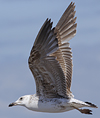 Lesser Black-backed Gull 2CY, May 09 2017, Katwijk, the Netherlands.
Lesser Black-backed Gull 2CY, May 09 2017, Katwijk, the Netherlands. Lesser Black-backed Gull 2CY, May 09 2017, Katwijk, the Netherlands.
Lesser Black-backed Gull 2CY, May 09 2017, Katwijk, the Netherlands. Lesser Black-backed Gull 2CY, May 09 2017, Katwijk, the Netherlands.
Lesser Black-backed Gull 2CY, May 09 2017, Katwijk, the Netherlands.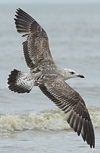 Lesser Black-backed Gull 2CY, May 10 2016, Katwijk, the Netherlands.
Lesser Black-backed Gull 2CY, May 10 2016, Katwijk, the Netherlands. Lesser Black-backed Gull 2CY, May 30 2016, Utrecht, the Netherlands.
Lesser Black-backed Gull 2CY, May 30 2016, Utrecht, the Netherlands. LBBG 2cy May 09 2014, Katwijk, the Netherlands.
LBBG 2cy May 09 2014, Katwijk, the Netherlands.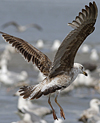 Lesser Black-backed Gull 2CY, May 29 2017, Heemskerk, the Netherlands.
Lesser Black-backed Gull 2CY, May 29 2017, Heemskerk, the Netherlands. Lesser Black-backed Gull 2CY, May 30 2016, Utrecht, the Netherlands.
Lesser Black-backed Gull 2CY, May 30 2016, Utrecht, the Netherlands. LBBG 2cy May 28 2015, Leiden, the Netherlands. P1-P3 missing.
LBBG 2cy May 28 2015, Leiden, the Netherlands. P1-P3 missing.  LBBG 2cy May 09 2014, Katwijk, the Netherlands.
LBBG 2cy May 09 2014, Katwijk, the Netherlands.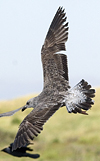 LBBG 2cy May 22 2014, Katwijk, the Netherlands.
LBBG 2cy May 22 2014, Katwijk, the Netherlands.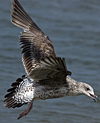 LBBG 2cy May 13 2014, Katwijk, the Netherlands.
LBBG 2cy May 13 2014, Katwijk, the Netherlands.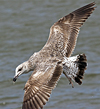 LBBG 2cy May 09 2014, Katwijk, the Netherlands.
LBBG 2cy May 09 2014, Katwijk, the Netherlands. LBBG 2cy May 22 2014, Katwijk, the Netherlands.
LBBG 2cy May 22 2014, Katwijk, the Netherlands. LBBG 2cy May 20 2014, Katwijk, the Netherlands.
LBBG 2cy May 20 2014, Katwijk, the Netherlands. Lesser Black-backed Gull 2CY, May 08 2016, Nieuw-Haamstede, the Netherlands.
Lesser Black-backed Gull 2CY, May 08 2016, Nieuw-Haamstede, the Netherlands. Lesser Black-backed Gull 2CY, May 30 2016, Utrecht, the Netherlands.
Lesser Black-backed Gull 2CY, May 30 2016, Utrecht, the Netherlands. Lesser Black-backed Gull 2CY, May 29 2017, Heemskerk, the Netherlands.
Lesser Black-backed Gull 2CY, May 29 2017, Heemskerk, the Netherlands. Lesser Black-backed Gull 2CY, May 29 2017, Heemskerk, the Netherlands.
Lesser Black-backed Gull 2CY, May 29 2017, Heemskerk, the Netherlands. Lesser Black-backed Gull 2CY, May 29 2017, Heemskerk, the Netherlands.
Lesser Black-backed Gull 2CY, May 29 2017, Heemskerk, the Netherlands. Lesser Black-backed Gull 2CY, May 27 2016, Utrecht, the Netherlands.
Lesser Black-backed Gull 2CY, May 27 2016, Utrecht, the Netherlands. Lesser Black-backed Gull 2CY, May 27 2016, Utrecht, the Netherlands.
Lesser Black-backed Gull 2CY, May 27 2016, Utrecht, the Netherlands. Lesser Black-backed Gull 2CY, May 27 2016, Utrecht, the Netherlands.
Lesser Black-backed Gull 2CY, May 27 2016, Utrecht, the Netherlands.  Lesser Black-backed Gull 2CY, May 30 2016, Utrecht, the Netherlands.
Lesser Black-backed Gull 2CY, May 30 2016, Utrecht, the Netherlands. Lesser Black-backed Gull 2CY, May 10 2016, Katwijk, the Netherlands.
Lesser Black-backed Gull 2CY, May 10 2016, Katwijk, the Netherlands. Lesser Black-backed Gull 2CY, May 29 2017, Heemskerk, the Netherlands.
Lesser Black-backed Gull 2CY, May 29 2017, Heemskerk, the Netherlands. Lesser Black-backed Gull 2CY, May 29 2017, Heemskerk, the Netherlands.
Lesser Black-backed Gull 2CY, May 29 2017, Heemskerk, the Netherlands. Lesser Black-backed Gull 2CY, May 29 2017, Heemskerk, the Netherlands.
Lesser Black-backed Gull 2CY, May 29 2017, Heemskerk, the Netherlands. Lesser Black-backed Gull 2CY, May 29 2017, Heemskerk, the Netherlands.
Lesser Black-backed Gull 2CY, May 29 2017, Heemskerk, the Netherlands. Lesser Black-backed Gull 2CY, May 29 2017, Heemskerk, the Netherlands.
Lesser Black-backed Gull 2CY, May 29 2017, Heemskerk, the Netherlands. Lesser Black-backed Gull 2CY, May 29 2017, Heemskerk, the Netherlands.
Lesser Black-backed Gull 2CY, May 29 2017, Heemskerk, the Netherlands. Lesser Black-backed Gull 2CY, May 29 2017, Heemskerk, the Netherlands.
Lesser Black-backed Gull 2CY, May 29 2017, Heemskerk, the Netherlands. Lesser Black-backed Gull 2CY, May 29 2017, Heemskerk, the Netherlands.
Lesser Black-backed Gull 2CY, May 29 2017, Heemskerk, the Netherlands. Lesser Black-backed Gull 2CY, May 29 2017, Heemskerk, the Netherlands.
Lesser Black-backed Gull 2CY, May 29 2017, Heemskerk, the Netherlands. Lesser Black-backed Gull 2CY, May 29 2017, Heemskerk, the Netherlands.
Lesser Black-backed Gull 2CY, May 29 2017, Heemskerk, the Netherlands. Lesser Black-backed Gull 2CY, May 29 2017, Heemskerk, the Netherlands.
Lesser Black-backed Gull 2CY, May 29 2017, Heemskerk, the Netherlands.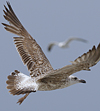 Lesser Black-backed Gull 2CY, May 29 2017, Heemskerk, the Netherlands.
Lesser Black-backed Gull 2CY, May 29 2017, Heemskerk, the Netherlands. Lesser Black-backed Gull 2CY, May 29 2017, Heemskerk, the Netherlands.
Lesser Black-backed Gull 2CY, May 29 2017, Heemskerk, the Netherlands. Lesser Black-backed Gull 2CY, May 29 2017, Heemskerk, the Netherlands. About ten graellsii-type birds.
Lesser Black-backed Gull 2CY, May 29 2017, Heemskerk, the Netherlands. About ten graellsii-type birds. Lesser Black-backed Gull 2CY, May 29 2017, Heemskerk, the Netherlands.
Lesser Black-backed Gull 2CY, May 29 2017, Heemskerk, the Netherlands. Lesser Black-backed Gull 2CY, May 29 2017, Heemskerk, the Netherlands.
Lesser Black-backed Gull 2CY, May 29 2017, Heemskerk, the Netherlands. Lesser Black-backed Gull 2CY, May 10 2017, Katwijk, the Netherlands.
Lesser Black-backed Gull 2CY, May 10 2017, Katwijk, the Netherlands.  Lesser Black-backed Gull 2CY, May 29 2017, Heemskerk, the Netherlands.
Lesser Black-backed Gull 2CY, May 29 2017, Heemskerk, the Netherlands. Lesser Black-backed Gull 2CY, May 29 2017, Heemskerk, the Netherlands.
Lesser Black-backed Gull 2CY, May 29 2017, Heemskerk, the Netherlands.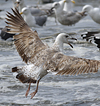 Lesser Black-backed Gull 2CY, May 29 2017, Heemskerk, the Netherlands.
Lesser Black-backed Gull 2CY, May 29 2017, Heemskerk, the Netherlands. Lesser Black-backed Gull 2CY, May 29 2017, Heemskerk, the Netherlands.
Lesser Black-backed Gull 2CY, May 29 2017, Heemskerk, the Netherlands. Lesser Black-backed Gull 2CY, May 29 2017, Heemskerk, the Netherlands.
Lesser Black-backed Gull 2CY, May 29 2017, Heemskerk, the Netherlands. Lesser Black-backed Gull 2CY, May 29 2017, Heemskerk, the Netherlands.
Lesser Black-backed Gull 2CY, May 29 2017, Heemskerk, the Netherlands.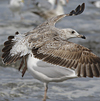 Lesser Black-backed Gull 2CY, May 29 2017, Heemskerk, the Netherlands.
Lesser Black-backed Gull 2CY, May 29 2017, Heemskerk, the Netherlands. Lesser Black-backed Gull 2CY, May 29 2017, Heemskerk, the Netherlands.
Lesser Black-backed Gull 2CY, May 29 2017, Heemskerk, the Netherlands.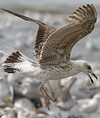 Lesser Black-backed Gull 2CY, May 29 2017, Heemskerk, the Netherlands.
Lesser Black-backed Gull 2CY, May 29 2017, Heemskerk, the Netherlands. Lesser Black-backed Gull 2CY, May 29 2017, Heemskerk, the Netherlands.
Lesser Black-backed Gull 2CY, May 29 2017, Heemskerk, the Netherlands. Lesser Black-backed Gull 2CY, May 29 2017, Heemskerk, the Netherlands.
Lesser Black-backed Gull 2CY, May 29 2017, Heemskerk, the Netherlands. Lesser Black-backed Gull 2CY, May 27 2016, Utrecht, the Netherlands.
Lesser Black-backed Gull 2CY, May 27 2016, Utrecht, the Netherlands. Lesser Black-backed Gull 2CY, May 29 2017, Heemskerk, the Netherlands.
Lesser Black-backed Gull 2CY, May 29 2017, Heemskerk, the Netherlands. Lesser Black-backed Gull 2CY, May 29 2017, Heemskerk, the Netherlands.
Lesser Black-backed Gull 2CY, May 29 2017, Heemskerk, the Netherlands. Lesser Black-backed Gull 2CY, May 29 2017, Heemskerk, the Netherlands.
Lesser Black-backed Gull 2CY, May 29 2017, Heemskerk, the Netherlands. Lesser Black-backed Gull 2CY, May 27 2016, Utrecht, the Netherlands.
Lesser Black-backed Gull 2CY, May 27 2016, Utrecht, the Netherlands. Lesser Black-backed Gull 2CY, May 29 2017, Heemskerk, the Netherlands.
Lesser Black-backed Gull 2CY, May 29 2017, Heemskerk, the Netherlands. Lesser Black-backed Gull 2CY, May 29 2017, Heemskerk, the Netherlands.
Lesser Black-backed Gull 2CY, May 29 2017, Heemskerk, the Netherlands. Lesser Black-backed Gull 2CY, May 29 2017, Heemskerk, the Netherlands.
Lesser Black-backed Gull 2CY, May 29 2017, Heemskerk, the Netherlands. Lesser Black-backed Gull 2CY, May 29 2017, Heemskerk, the Netherlands.
Lesser Black-backed Gull 2CY, May 29 2017, Heemskerk, the Netherlands. Lesser Black-backed Gull 2CY, May 29 2017, Heemskerk, the Netherlands.
Lesser Black-backed Gull 2CY, May 29 2017, Heemskerk, the Netherlands.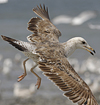 Lesser Black-backed Gull 2CY, May 29 2017, Heemskerk, the Netherlands.
Lesser Black-backed Gull 2CY, May 29 2017, Heemskerk, the Netherlands. Lesser Black-backed Gull 2CY, May 29 2017, Heemskerk, the Netherlands.
Lesser Black-backed Gull 2CY, May 29 2017, Heemskerk, the Netherlands.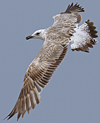 Lesser Black-backed Gull 2CY, May 29 2017, Heemskerk, the Netherlands.
Lesser Black-backed Gull 2CY, May 29 2017, Heemskerk, the Netherlands. Lesser Black-backed Gull 2CY, May 29 2017, Heemskerk, the Netherlands.
Lesser Black-backed Gull 2CY, May 29 2017, Heemskerk, the Netherlands. Lesser Black-backed Gull 2CY, May 29 2017, Heemskerk, the Netherlands.
Lesser Black-backed Gull 2CY, May 29 2017, Heemskerk, the Netherlands. Lesser Black-backed Gull 2CY, May 29 2017, Heemskerk, the Netherlands.
Lesser Black-backed Gull 2CY, May 29 2017, Heemskerk, the Netherlands. Lesser Black-backed Gull 2CY, May 30 2016, Utrecht, the Netherlands.
Lesser Black-backed Gull 2CY, May 30 2016, Utrecht, the Netherlands. Lesser Black-backed Gull 2CY, May 30 2016, Utrecht, the Netherlands.
Lesser Black-backed Gull 2CY, May 30 2016, Utrecht, the Netherlands. Lesser Black-backed Gull 2CY, May 29 2017, Heemskerk, the Netherlands.
Lesser Black-backed Gull 2CY, May 29 2017, Heemskerk, the Netherlands. Lesser Black-backed Gull 2CY, May 30 2016, Utrecht, the Netherlands.
Lesser Black-backed Gull 2CY, May 30 2016, Utrecht, the Netherlands. Lesser Black-backed Gull 2CY, May 29 2017, Heemskerk, the Netherlands.
Lesser Black-backed Gull 2CY, May 29 2017, Heemskerk, the Netherlands. Lesser Black-backed Gull 2CY, May 29 2017, Heemskerk, the Netherlands.
Lesser Black-backed Gull 2CY, May 29 2017, Heemskerk, the Netherlands. Lesser Black-backed Gull 2CY, May 29 2017, Heemskerk, the Netherlands.
Lesser Black-backed Gull 2CY, May 29 2017, Heemskerk, the Netherlands. Lesser Black-backed Gull 2CY, May 10 2017, Katwijk, the Netherlands.
Lesser Black-backed Gull 2CY, May 10 2017, Katwijk, the Netherlands.  Lesser Black-backed Gull 2CY, May 29 2017, Heemskerk, the Netherlands.
Lesser Black-backed Gull 2CY, May 29 2017, Heemskerk, the Netherlands. LBBG 2cy May 25 2000, Maasvlakte, the Netherlands.
LBBG 2cy May 25 2000, Maasvlakte, the Netherlands. LBBG 2cy May 29 2000 Maasvlakte, the
Netherlands.
LBBG 2cy May 29 2000 Maasvlakte, the
Netherlands.